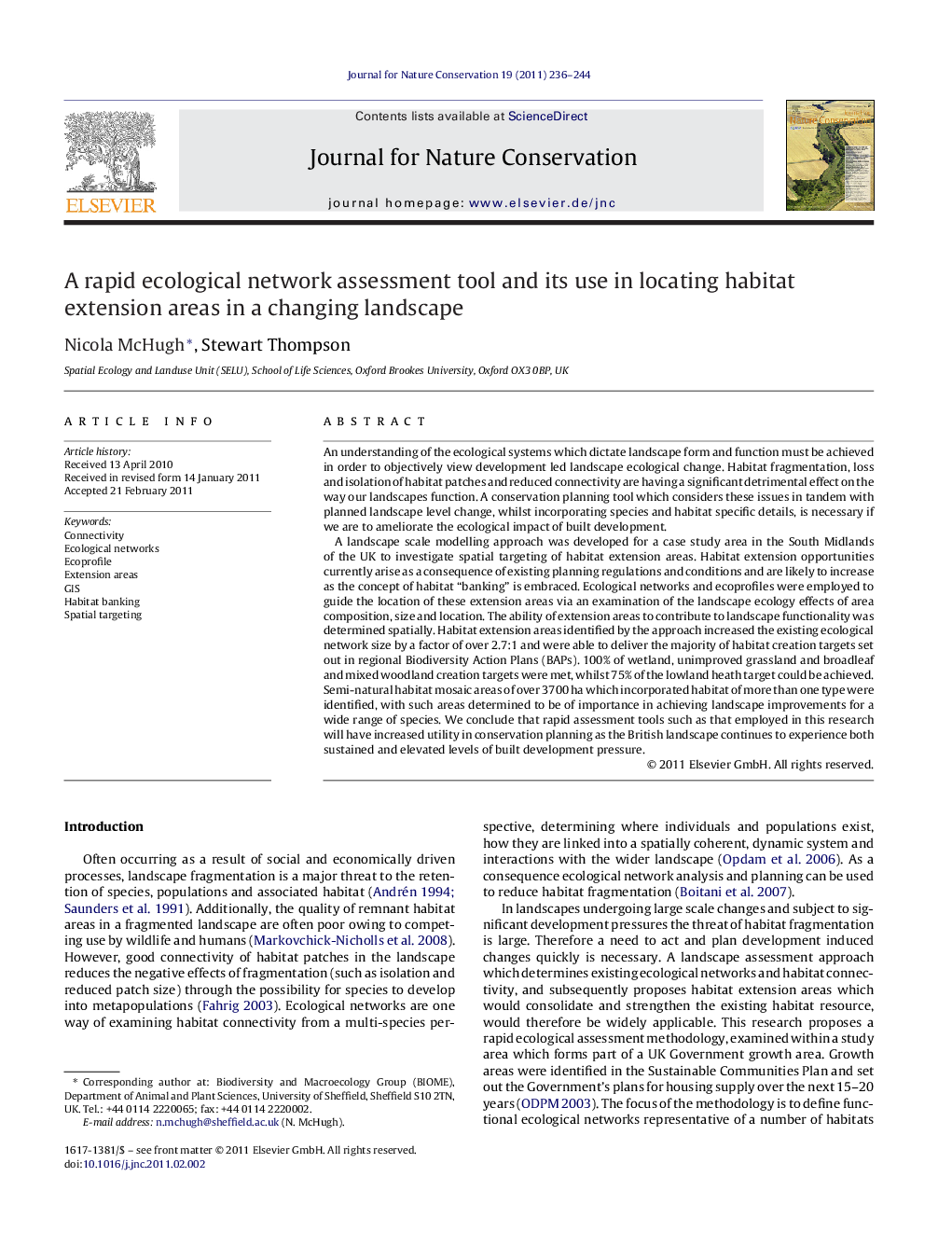| Article ID | Journal | Published Year | Pages | File Type |
|---|---|---|---|---|
| 4400100 | Journal for Nature Conservation | 2011 | 9 Pages |
Abstract
A landscape scale modelling approach was developed for a case study area in the South Midlands of the UK to investigate spatial targeting of habitat extension areas. Habitat extension opportunities currently arise as a consequence of existing planning regulations and conditions and are likely to increase as the concept of habitat “banking” is embraced. Ecological networks and ecoprofiles were employed to guide the location of these extension areas via an examination of the landscape ecology effects of area composition, size and location. The ability of extension areas to contribute to landscape functionality was determined spatially. Habitat extension areas identified by the approach increased the existing ecological network size by a factor of over 2.7:1 and were able to deliver the majority of habitat creation targets set out in regional Biodiversity Action Plans (BAPs). 100% of wetland, unimproved grassland and broadleaf and mixed woodland creation targets were met, whilst 75% of the lowland heath target could be achieved. Semi-natural habitat mosaic areas of over 3700Â ha which incorporated habitat of more than one type were identified, with such areas determined to be of importance in achieving landscape improvements for a wide range of species. We conclude that rapid assessment tools such as that employed in this research will have increased utility in conservation planning as the British landscape continues to experience both sustained and elevated levels of built development pressure.
Related Topics
Physical Sciences and Engineering
Earth and Planetary Sciences
Earth and Planetary Sciences (General)
Authors
Nicola McHugh, Stewart Thompson,
